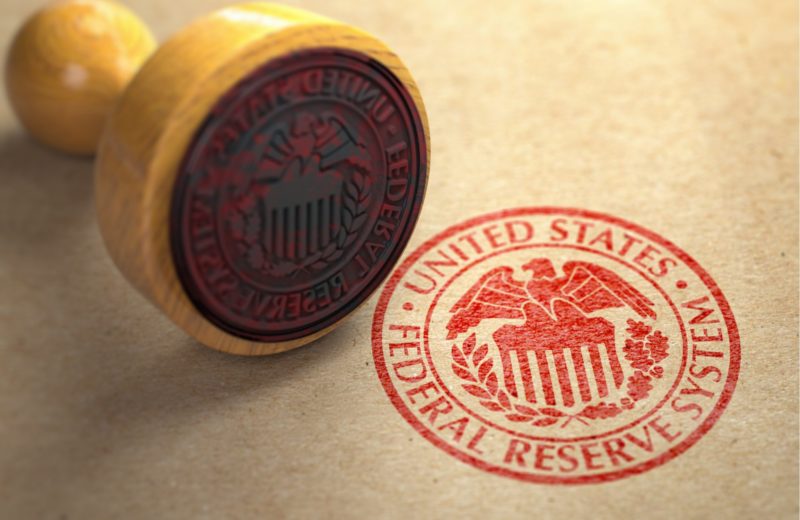The End of Traditional Monetary Policy

Last June, the FRED Blog identified something that has emerged in discussions I have had with other macroeconomists: the standard macroeconomics textbook no longer adequately explains monetary policy at the Federal Reserve.
Before the crisis in the fall of 2008, monetary policy was primarily implemented by adjustments in the value of U.S. Treasuries held by the Federal Reserve. Monetary easing meant that the Federal Reserve increased its holdings (or its rate of accumulation) of Treasuries, moving this value in the opposite direction in the case of monetary tightening.
Yes, the Federal Reserve was involved in the overnight lending market, but this intervention was minor in comparison to the size of traditional open market operations.
With the crisis in 2008, the textbook framework was tossed aside in favor of a complex set of instruments that allowed the Federal Reserve to not only adjust the quantity of base money, but also to determine how much of the base is allowed to circulate. Some observers were confounded when, after the quantity of base money more than doubled, the expected hyperinflation never occurred.
I teach my macroeconomics students that an increase in the quantity of base money leads to an increase in the price level and that a rise in the rate of growth of the quantity of base money will promote an increase in the inflation rate in the long run. The teaching of this fact is part of the textbook macroeconomics curriculum. Several weeks after teaching this to my students, I must explain why the relationship between the price level and the quantity of base money no longer operates as anticipated.
The Federal Reserve follows a new operating system that depends on a variety of instruments, not primarily on traditional open market operations. Yes, monetary policy implemented by the Federal Reserve still includes the sale and purchase of securities, but this is only one means of, and is often only the first step in, implementing monetary policy. Below I identify the primary policy instruments and their effects.
Open Market Operations
The Federal Reserve still engages in open market operations, where it purchases and sells securities — usually U.S. Treasuries, but quantitative easing also includes mortgages — as a means of increasing and decreasing the quantity of base money. Purchases of Treasuries and mortgages increase demand for these instruments, lowering interest rates of those instruments relative to other types of securities so long as this additional demand is maintained. These interventions also exert broader effects in financial markets whereby real rates of interest across the market are temporarily reduced.
Absent additional intervention, this increase or decrease in the quantity of base money would lead also to an increase or decrease in the quantity of money in circulation. Open market operations on their own, however, are no longer a good indication of the stance of monetary policy. New base money that is distributed via open market operations can be kept out of circulation using any one of several policy instruments available to the Federal Reserve.
Interest on Excess Reserves
The Federal Reserve pays interest to member banks for keeping their excess reserves on its account. Payment of interest on excess reserves reduces the quantity of base money in circulation (currency and reserves that would support credit creation). Banks are paid a risk-free rate of return to not lend. This prevents a substantial portion of the monetary base from supporting credit creation that would otherwise generate an increase in spending and subsequent inflation.
The effect of the payment of interest on excess reserves depends on the discrepancy between the rate paid on excess reserves and the federal funds rate. The rate paid on excess reserves is truly a risk-free rate of return whereas there exists some positive risk, even if minute, in lending money overnight to banks other than the central bank.
The smaller the discrepancy between the rate paid on excess reserves and the federal funds rate, the greater the quantity of base money held as excess reserves. These excess reserves, by definition, represent base money that is removed from circulation within the banking system. If the rate paid on excess reserves is above the federal funds rate, the lending in the overnight market slows to a near halt.
Payment of interest on reserves must either draw from revenue earned by the Treasury or require creation of new base money by the Federal Reserve. So far, payment has been drawn from revenues; however, the Federal Reserve must choose between solvency and money creation if the sum of payment of remittances to the Treasury and payment of interest on excess reserves cannot be met solely by revenues.
Repos, Reverse Repos, and “Overnight” Repos
A repo is a repurchase agreement that entails a promise of the seller to repurchase the instrument at a date in the near future. It is effectively a short-term loan to banks in the overnight lending market. When the Federal Reserve purchases repos, those purchases are self-reversing. The Federal Reserve may purchase new repos at or before the date of expiration in order to offset this reversal. Repos and “overnight” repos increase liquidity in the overnight lending market without impacting the total quantity of base money. The effect of the intervention is expected to remain isolated in the overnight lending market.
Overnight repos actually indicate purchases of Treasuries by the Federal Reserve from dealers in the overnight lending market. This instrument allows the Federal Reserve to simultaneously support borrowing by the federal government while providing liquidity to the overnight lending market. The relevant alternative to holding these Treasuries is for a bank to lend in the overnight market.
A reverse repurchase agreement is simply a repurchase agreement where the Federal Reserve promises to repurchase the instrument. An increase in reverse repurchase agreements by the Federal Reserve diminishes the quantity of funds made available in the overnight lending market. The Federal Reserve also offers overnight reverse repos.
Treasury’s General Account
The Treasury holds some of its funds at the Federal Reserve. Like excess reserves held at the Federal Reserve, Treasury funds held there are effectively removed from financial markets. After the 2008 crisis, the U.S. Treasury General Account at the Federal Reserve began to significantly affect monetary policy. Increases in the account remove base money from circulation that would serve as reserves in the financial system.
The recent provision of liquidity to overnight markets occurred alongside an increase in Treasuries held outright by the Federal Reserve and in concert with a significant shift in the Treasury’s General Account. The lesson to be drawn appears to be that, for now, the Treasury will work in concert with the Federal Reserve to prevent inflation if the Fed provides support for federal borrowing.
Understanding the New Policy Regime
The Federal Reserve’s current operating system allows it to sterilize the effects of monetary expansion. It can purchase securities and simultaneously (1) raise the rate paid on excess reserves relative to the federal funds rate or (2) work with the Treasury for it to increase the balance of the General Account. Or (3) it may isolate the effects of monetary expansion by providing support for overnight lending markets. As a result of payment of interest on excess reserves, there is a discrepancy between the quantity of base money in circulation and the total quantity of base money. Changes in the Treasury’s General Account and intervention in the overnight lending market can reduce the total quantity of base money while maintaining a swollen balance sheet.
Monetary policy ain’t what it used to be.
The Federal Reserve has innovated methods that allow it to hide the effect of its monetary intervention — namely, support for federal borrowing. The intervention can only remain hidden so long as the Federal Reserve earns a profit.
If the value of remittances begins to swamp annual revenues, policy makers at the Federal Reserve will likely resort to money creation in order to pay interest on excess reserves. This will either result in higher rates of inflation or increased dependence upon mechanisms that sterilize the effect of this money creation. Neither outcome is conducive to the health of financial markets or a vibrant economy.









